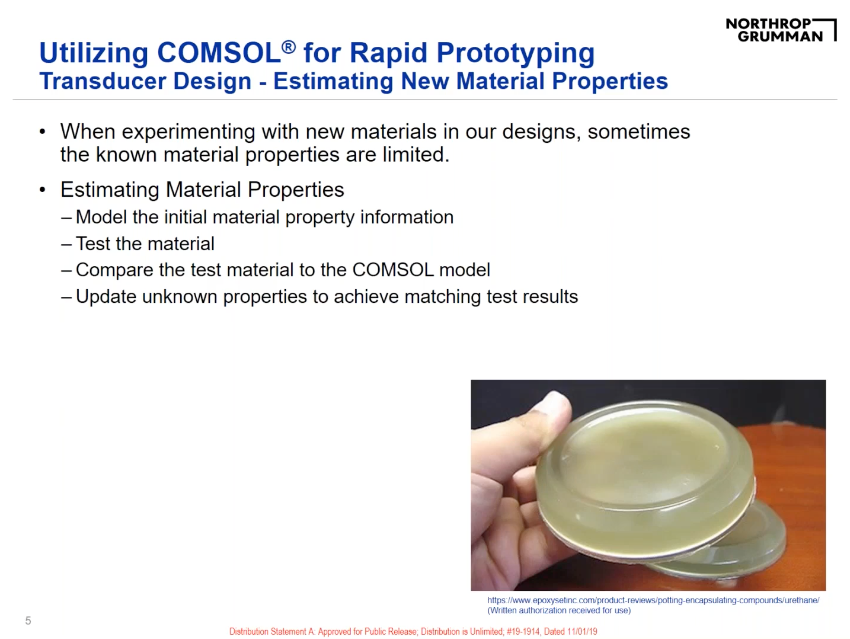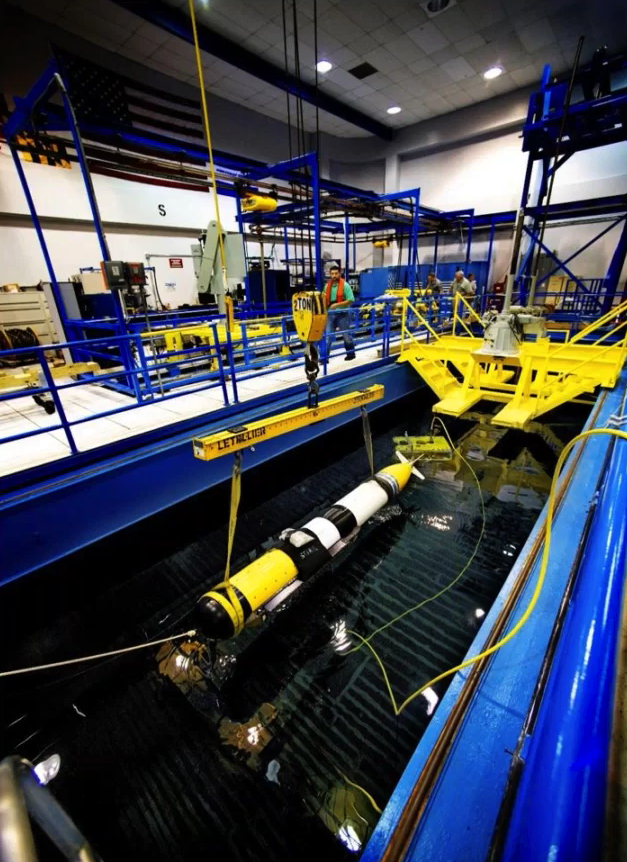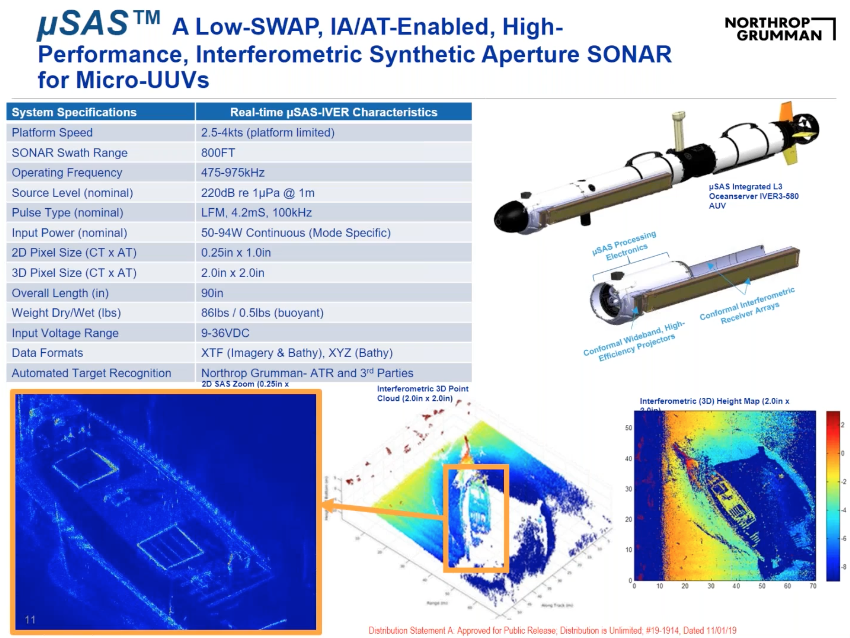
The design and implementation of sonar systems at Northrop Grumman Corporation (NGC) is a fast-paced and innovative process, thanks in part to multiphysics modeling. In a keynote talk from the COMSOL Conference 2020 North America, Lauren Lagua of the Sonar Integration Team, Undersea Systems Division, discusses how she uses the COMSOL Multiphysics® software for the rapid prototyping design cycle in the development of sonar systems. Here, you’ll find a recording of her talk and a brief summary.
Lauren Lagua Discusses Using COMSOL Multiphysics® for Rapid Prototyping
The Rapid Prototyping Design Phase at NGC
At Northrop Grumman, engineers follow a rapid prototyping design phase consisting of four parts, with the first three parts often iterated multiple times:
- Design
- Manufacturing a prototype
- Testing & design verification
- Manufacturing of the final design
According to Lauren Lagua, COMSOL Multiphysics is implemented in each part of this process.
Design
When designing transducers for sonar systems, engineers experiment with different parameters to see how they can best meet the overall goals of the project. They may experiment with the materials (such as new piezoelectrics), geometry, frequency, and more. The team uses COMSOL Multiphysics, specifically the Pressure Acoustics, Solid Mechanics, Electrostatics, and Electrical Circuit interfaces, to determine how different parameter changes affect their designs.
When experimenting with new materials, the team often lacks all of the necessary information from vendors about the material properties. Instead, they use COMSOL Multiphysics to estimate these properties by taking the information they do have, testing the materials, and comparing the results with their COMSOL models.

A screenshot from the keynote presentation showing an example of a material used in transducer design.
Prototype
After the NGC team gets a model up and running, they perform a range of tests throughout the manufacture of the prototype and compare them to the model. Sometimes the results don’t match, such as if there are physics missing in the model. Other times, Lagua is able to identify a manufacturing issue in the prototype. For instance, when bonding a piezoelectric material to a backing substrate, there could be a trapped air bubble or an imperfect bond.
Lagua makes a hypothesis on what is causing the problem and models her hypothesis in COMSOL Multiphysics. By comparing the model results to her hypothesis about the original prototype, Lagua is able to troubleshoot manufacturing issues and correct them quickly.
Test and Verify
When a prototype is ready, the NGC team performs system-level testing of its electrical and acoustic properties.
Electrical testing includes impedance testing and capacitance measurements.
In terms of acoustics, Northrop Grumman uses a state-of-the-art acoustic test facility. The largest test pool for a private industry, the facility is 50 feet (15.24 meters) in diameter, holds 400,000 gallons (1,514,164.71 liters) of water, and is lined with redwood to create a perfect broadband acoustic testing environment (mimicking that of open water). The acoustic test pool is used to measure transmit voltage response, far-field voltage sensitivity, and radiation patterns in the sonar transducers. Test results from the facility are incorporated back into the model and used to verify the model, or tweak it if necessary.

The acoustic test pool. Image courtesy Northrop Grumman Corporation.
Once a design has gone through the first three stages of the rapid prototyping design phase, they can be quickly iterated again and again until the final version of the design is ready to be manufactured.
Sonar for Microsized Unmanned Undersea Vehicles
In her keynote talk, Lagua gives an example of a project at Northrop Grumman Corporation in which the rapid prototyping design phase and the COMSOL Multiphysics software were implemented successfully. The μSAS™ system is a two-sided, side-scan sonar for use in an unmanned micro-undersea vehicle. These small-scale vehicles are about 6 inches (15.24 centimeters) in diameter and preprogrammed for missions.

A screenshot from the keynote presentation demonstrating the μSAS™ system.
Due to the small scale of the device, it has strict design constraints for size, weight, and power. Lagua’s goal was to develop the best sonar possible in the small-scale device, while also conserving energy. In the end, the NGC team designed a device with sonar on both sides, which implements interferometric processing. This means that the UUV’s sonar system can interpolate 3D images.
Design, Prototype, Test, and Verify
Using COMSOL Multiphysics, the Northrop Grumman team is able to design, prototype, test, and verify new designs quickly — sometimes as quickly as one week! As Lagua mentions in her talk, “COMSOL has made a huge impact at Northrop Grumman — and for me.”
To learn more about the use of simulation and the rapid prototyping cycle at Northrop Grumman, watch the keynote video at the top of this post.
μSAS is a trademark of Northrop Grumman Corporation.




Comments (0)